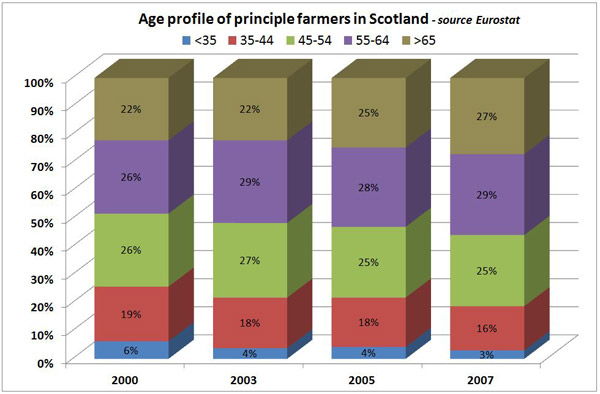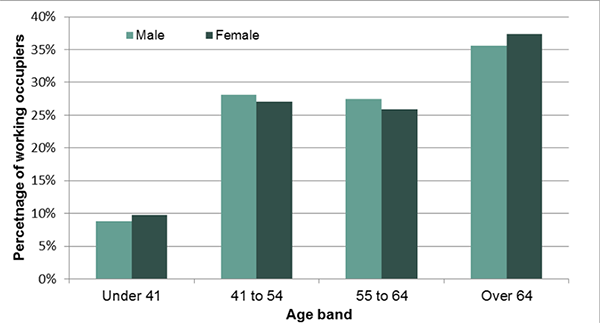What is the age structure of Scottish farming?
“Entry to and Exit from Farming in the UK” (ADAS et al, 2004) refers to a reduced rate of entry by young farmers and a reduced rate of retirement by older farmers as combining to age the agricultural population at an unprecedented rate. Whilst the results from the 2010 EU Farm Practice Survey have not yet been published for Scotland evidence from previous surveys suggest that on average Scottish farmers are indeed ageing.
The proportion of principal farmers under the age of 44 fell from 25% in 2000 to only 19% in 2007 whilst those over 65 years of age increased from 22% to 27% of all farmers during the same period.

New data was collected by the Scottish Government in 2015 which illustrates the largest age band of principle farmers remains in the over 64 bracket.

It is acknowledged that farming, unlike many other business sectors is a way of life and since farmers are both living, and remaining active, longer it perhaps explains the low rates of exit from the sector. Thus, the increasing average age of farmers may simply reflect an increased age at which successors take on the farm business coupled with growth in the average age at which new entrants from outside agriculture can afford the significant capital investment required to start-up in farming.
It should, however, be noted that these statistics can somewhat mask the true nature of ageing farm populations since there often is a young farmer living and working on the farm whilst the older generation remain the official head of the holding. This is an important point as the younger generation may actually be managing much of the farming operation on a day-to-day basis but do they not control the business finances nor have a controlling stake in the business (in terms of shares / partnership stake, etc). This means that it is difficult to assess the extent of farmers’ unwillingness to retire as a barrier to potential new entrants gaining a controlling interest in the farm business.
